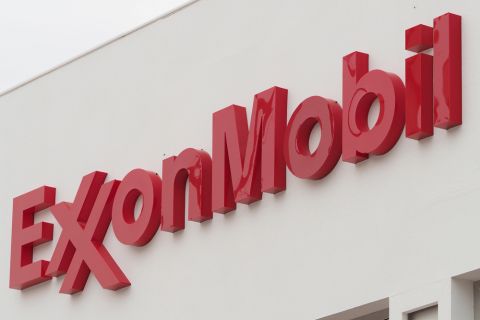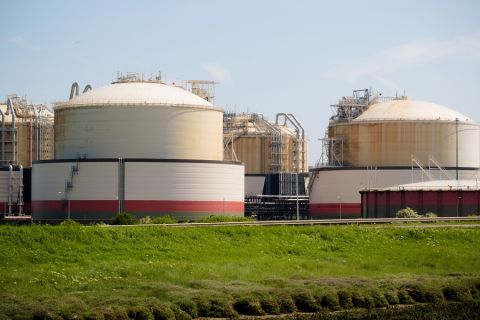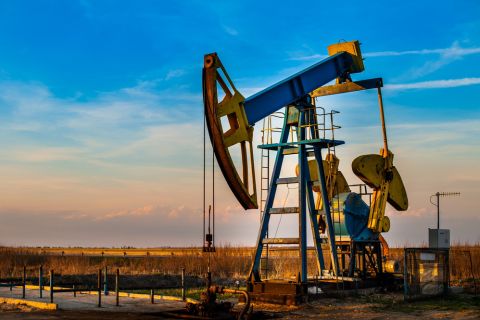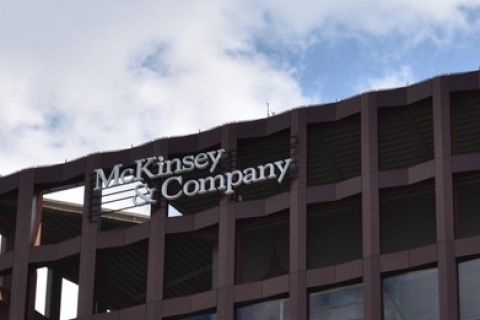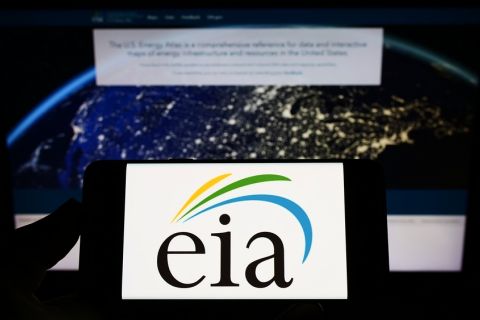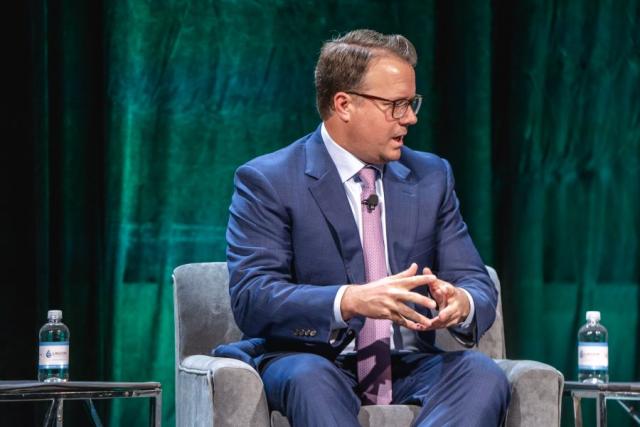
Kaes Van't Hof at Hart Energy's 2022 Executive Oil Conference in Midland, Texas. (Source: Arnaldo Larios / Hart Energy)
As Kaes Van’t Hof discussed Diamondback Energy Inc.’s dealmaking, there was no hint another acquisition was underway.
“Acreage is precious right now. It’s a knife fight for every acre, particularly in the Midland Basin,” the Diamondback president and CFO said at Hart Energy’s Executive Oil Conference in Midland, Texas.
The Permian pure play was in the midst of buying FireBird Energy LLC’s 68,000 net acres in the Midland Basin for $1.75 billion in cash ($775 million) and stock. Later that day, on Nov. 16, Van’t Hof and his colleagues announced a deal to buy Lario Permian LLC’s 15,000 net acres for $1.55 billion in cash ($850 million) and stock.
“We started with 10,000 acres by the airport here in Midland and have built up to 500,000 [net],” Van’t Hof said that morning. Make that 515,000 net by day’s end.
The operator began drilling in the Permian Basin in the conventional rock days of 2007 with 4,174 net acres and 800 net boe/d. It grew that to 52,000 net by the time of its IPO in October 2012, selling 12.5 million shares at $17.50 each.
Post-offering, 35.1 million shares were outstanding, giving it a market cap of about $600 million. In early December, it was $24 billion.
Here’s an abridged version of three conversations with Van’t Hof in Midland.
Nissa Darbonne: Generalist investors are returning to oil and gas?
Kaes Van’t Hof: I think we are seeing the mythical generalist investor start to come back into the space. A lot of us have shifted our business model to a lower-growth, higher-return model, and our investors seem to be enjoying that.
I think success begets success. As an industry, we all have healthier balance sheets, healthier companies, healthier business models, and that should attract investor capital over time.
You haven’t seen them come back into the top five of our shareholder roster, but certainly in the top 15 or 20. They aren’t owning 10% or 13% of the stock like they might have when this shale revolution kicked off.
But if we keep executing, keep hitting numbers, more and more investors are going to come back because this is a business that generates real cash in a world where interest rates are rising and businesses that aren’t generating cash aren’t doing very well in the stock market.
ND: I’m seeing fewer sector specialists anymore.
KVH: It was a tough few years for the sector from a public-markets perspective. And that led to a brain drain as well on the investor side. There are certainly fewer energy specialists on the investor side. You’re starting to see some of that come back.
It all goes back to making money. This business is very healthy.
ND: Returning profit to investors.
KVH: What a concept.
ND: It’s fairly novel in the crypto business, certainly. In the Permian, do you feel capital constraint is also better for the basin itself?
KVH: It’s a lot better for the basin. We had—I won’t say unlimited—free money for a few years where you could call up a banker and raise equity overnight for every deal and your stock went up.
Maybe too much money was raised and too much money was spent delineating or trying to grow too aggressively. That’s inefficient.
I think we’ve matured as a sector.
ND: You issued $1.1 billion of senior notes due 2033 at 6.25% and using $500 million of that to retire 5.625% senior notes due 2025. What’s the idea behind using higher-interest money?
KVH: We raised 10-year money two years ago at 3.25%. So it’s not the quality of the credit; it’s just the Fed raising rates.
But in this business, it’s good to make sure you have cash and you have a significant runway between now and your next maturity. With (rolling Rattler Midstream LP back into Diamondback), we took out Rattler notes.
They also had some reporting provisions we wanted to get rid of. So we took those out and pre-funded some of the FireBird deal and unfortunately had to pay more than 6% for it.
But, with this business generating the free cash it’s generating, that should be paid down very, very quickly.
ND: With the acquisition in 2021 from Guidon (Operating LP) and of QEP (Resources Inc.) and now with FireBird, you’ve been buying adjacent, bolting on. Would you consider making a leap?
KVH: We started with 10,000 acres by the airport here in Midland and have built up to 500,000 acres in the Permian. We’ve had to scrap for every acre and for deals like Guidon, QEP, Firebird all in our backyard where we know the rock the best, and we think we have a differential advantage from our cost structure and our understanding of the rock.
We did make a move in 2016 to the Delaware Basin and that expanded when we bought Energen (Corp.) in 2018. But 80% of our spending and 75% to 80% of our acreage and inventory are still in the Midland Basin, which we call home.
At a high level, there aren’t that many deals left to do. The Permian has been highly consolidated, and that’s why getting a deal like FireBird is very beneficial to Diamondback’s shareholders—because we’re Permian-based.
We haven’t looked outside the Permian. I think that’s a long way off if it ever happens because the returns here are the best in North America on the oil side.
ND: Some of FireBird’s portfolio came from Chevron Corp. and others since 2019. I imagine you had looked at those properties as well. You didn’t like them then, but they work for you now?
KVH: Those guys made a great bet. (Many are from) the old RSP Permian (Inc.) team that knew the west side of the Midland Basin very, very well. What Diamondback doesn’t do and what we’re not good at is making big bets on exploration; we’re an acquire-and-exploit company.
In this case, we saw significant well control and good well performance farther west. That gave us the confidence to approach those guys and get a deal done.
So the hat’s off to them. They bought during the lows of COVID, spent some capital in areas that people had not spent a ton of horizontal-development capital in and it worked out.
ND: You’ve sold $155 million toward a target of $500 million in noncore divestments. What did you sell?
KVH: The first deal was some acreage that was a little scattered around our position in the northern Delaware. The buyer approached us and offered a number that was much higher than our internal value because we weren’t going to develop it in the next seven, eight or nine years.
So from a PV perspective, they offered us a lot more value.
Generally, we’ll sell any asset if it’s the right value, but inventory is certainly precious in this business today.
ND: More of your acreage is for sale?
KVH: As acreage is precious right now, it’s a knife fight for every acre, particularly in the Midland Basin. So if someone pays a huge number, we’ll take the call.
I’ve had a lot of people looking for acreage, but I’ve disappointed all of them when they’ve asked about it so far.
ND: So you’re selling some midstream then?
KVH: We have a significant amount of midstream assets from the Rattler deal and some great joint ventures around the basin. Those businesses trade at eight, nine or 10 times cash flow versus E&Ps trading at four times cash flow. If you can sell an entity for eight or nine times cash flow and buy back shares at four times cash flow, our investors should be happy with that outcome.
So that’s kind of where we’re focused. We have some time to get it done and, at the end of the day, it comes down to value and making sure the balance sheet is as strong as possible through the cycle.
ND: Do you see Diamondback ultimately being the Permian consolidator or the consolidated? What’s the exit strategy or are you everyone’s exit strategy?
KVH: (Laughs.) I don’t know if I’m everyone’s exit strategy, but certainly a lot of people have exited to us over the years. I mean, we built this business from nothing, right? We went public in 2012 after trying to sell the company and no one put a bid in.
So, we’ve come a long way and, generally, the way we see this business is we manufacture barrels and we manufacture barrels cheaper than anybody else.
We don’t think about an exit. Certainly we will do what’s right for our shareholders if there ever was an exit approach.
But that’s not what we spend a lot of time about. We spend a lot of time about how we can generate returns to our shareholders and continue to get the stock price up by doing smart deals at the right times.
ND: How’s the availability of field services?
KVH: There’s always a fun push/pull between the service guys and the E&Ps, but the service industry has also figured out capital discipline in some form just like the operators.
I think what’s changed is that the service sector, when they want to build new equipment, they want a real contract associated with that. And I think that promotes a healthier relationship between upstream and service and should result in better returns for all of us.
There’s a lot of inventory left to develop. I think this new business model of not spending every dollar you have to grow is conducive to a healthier service and upstream market that we can both make money for a long time together rather than fight about pricing all the time.
Permian Barnett
Pioneer Natural Resources Co. plans to test the deep Barnett and Woodford formations underlying its Midland Basin leasehold this year.
In November, Occidental Petroleum Corp. reported a Barnett test in the Midland Basin as a “successful appraisal.” That and a Second Bone Spring test in the Delaware Basin, it reported in an investor call, “have moved themselves up to really top tier in our development plans.
“We have optionality in terms of when we develop that and co-develop it, but it’s good to see those secondary benches add to that inventory.”
In the Central Basin Platform rather than the Midland Basin, Diamondback Energy Inc. tested the Barnett in 2019. In May of 2020 during the COVID-related oil and gas price bust, though, it announced it was suspending further testing.
ND: The Midland Basin’s Barnett is in your “Other” category in describing your inventory in public filings. Is deep Permian drilling becoming interesting to you again?
KVH: I think it’s still a long way off from real development, but it’s certainly getting a lot of attention. There have been rumors of some really good Barnett tests. If that happens, we own a lot of mineral rights and a lot of leases that could be developed.
No promises on when we’re going to test it, but we’re certainly keeping our ear to the street on what some recent results have looked like from peers.
It’s another testament to how much rock and resource there is in the Permian. But (for now) we have so many other zones we’ve been developing.
ND: Would you do the Barnett from existing pads?
KVH: It depends on the area but in most cases probably. There’s probably more oil there than we think. And wet gas as well.
But we’ll see. Using your existing infrastructure where you’ve spent a lot of money is a prudent way to save capital outside of drilling and completing these wells.
ND: How do the public equity markets feel about spending on exploration?
KVH: I think it depends, right? In an area like Spanish Trail by the airport, we own 100% of the minerals and operate. So that’s an area where it’s easy for us to spend some dollars trying different zones.
I think we’ll probably have a Barnett test there sooner rather than later. (But) I think we’ll be as we always have been: a fast follower rather than a leader when it comes to testing other zones.
But it’s exciting. We kind of had this whole world of everyone just talking about free cash flow and how you’re going to return free cash flow for the last two years. And now some of the traditional things that are so exciting about the oil business are coming back—like other zones.
And how do you develop all these zones together? Do they communicate? How do they communicate?
So, I think the Barnett’s pretty exciting. I don’t want to jump out there and say we have 3,000 locations in the Barnett. But certainly there’s going to be some Barnett that works in the Midland Basin.
They’re just more expensive than the (shallower) traditional Wolfcamp development.
ND: You said “3,000.” Is that random?
KVH: (Laughs.) That was completely random, yes. So no quotes on that. There’s been like one well drilled (by Oxy) in the basin on it. But the one test looks pretty good.
Permian natgas
Nissa Darbonne: You’re producing a half-Bcf/d. Are you looking to contract with LNG shippers on the Gulf Coast or on Mexico’s Pacific coast?
Kaes Van’t Hof: You need to have a few things to do an LNG deal. You have to have a big balance sheet because you have to sign a 10-year or 15-year deal, take or pay.
And you have to control the molecule to the Gulf Coast. We have some gas we do control down to the Gulf that we could probably do a deal on.
But these LNG deals cut both ways too, right? In 2020, anybody that had an LNG deal was having cargos canceled on them because they weren’t leaving the coast. You have to be able to deal with that volatility and eat the downside.
Right now, with the crisis in Europe and Asia fighting with Europe for molecules, the price is high.
But that cuts both ways. I think a portion of our gas getting international (price) exposure is probably prudent over time. But it’s going to take a few years to get new LNG facilities up and running in the Gulf Coast.
ND: ConocoPhillips is in a deal with Sempra Energy on Mexico’s Pacific coast, getting Permian gas there via southern California. But is the El Paso Pipeline reliable enough?
KVH: I’m sure it is. It’s just full. And these pipes go down for maintenance and so do gas plants.
When a gas plant goes down for maintenance, you’re going to have to produce through it or try to find offloads.
That’s why we push our midstream partners to talk to their friends across the fence line and work together to move the gas.
ND: At what point does it have to be flared?
KVH: The gas is going to move; it’s just going to move cheap.
It seems like for the past five years, it’s just been a one-way street where the operator takes all of the heat. But if you look at our flaring, 85% of it is the fault of downstream issues. And that number is probably going to pick up.
I certainly understand that the supply chain’s tight. There are some gas plants coming online here in the next few months. But that’s just going to push the problem to the pipelines. So it’s going to be tight here in the Permian for the next couple years.
I think operators and midstream providers have gotten together to FID [final investment decision] pipes faster than in the past. But there’s going to be some cheap gas in the Permian next year, which is why I’m happy we have two electric fleets starting up that are going to be buying that cheap gas instead of diesel.
ND: Tell us more about that.
KVH: We’ve really spent a lot of money trying to electrify the oil field. We built a lot of substations and systems to put all of our production on line power.
I think we have three rigs on line power now too and moving toward about half. It’s going to be tough to get all of them on line power.
Second to that, we have a big program kicking off next year with two fleets from Halliburton (Co.). They’ll be pulling off the grid but supplemented with significant battery storage on site.
It’s fascinating from the environmental perspective, and it saves us a bunch of money not having to pay for diesel.
E-politics and e-valuation
ND: The messaging from President Biden is that he wants oil producers to produce more oil, but he wants to put oil out of business. Can you unpack that for us?
KVH: There’s a lot to unpack there. While the (political) rhetoric continues to be disheartening and contributes to the lack of understanding of our business, at the end of the day we produce a product that’s vital to this country and has made this country extremely energy-strong relative to where we were before the shale revolution.
I think that’s underappreciated by all politicians. We’re doing a lot of good things for this economy and for this country. And it’s time to get a little bit of credit for it.
ND: Your thoughts on methane regulations?
KVH: We don’t know exactly what the final rules are. The EPA hit us (on Nov. 11) with a lot of uncertainty. (But) our shareholders are pushing us to do better than regulation anyway, right?
So while, as an oil guy in Texas, you don’t want to say you’re in favor of regulation, if the regulation ends up giving us credit from the general public that we are doing the right thing environmentally in producing these barrels, then maybe we’ll get credit for it.
The original EPA rule with the methane tax or fee in it—we’re not going to pay any tax on that because we’re already well ahead of those numbers.
From an industry perspective, it’s probably not helpful if you’re a smaller operator, having to spend significant dollars on (what) isn’t income-generating.
But as a large producer, it fits under our license to operate that we have to execute on as a public producer anyway.
ND: On that, how do you value—or devalue—an acquisition target when factoring for the target’s environmental score?
KVH: We’ve been getting that question a lot from our large shareholders. Every year, we do an engagement on all things ESG with our Top 20 shareholders. And this has been a topic of discussion.
It certainly goes into the modeling we do for what we’re buying. I wouldn’t say it affects value by more than a couple percent here or there. But in general, we expect to get those assets up to our quality very quickly.
They need to slot into our environmental goals—our Scope One targets, Scope Two, water recycling, flaring, all the above. And while it won’t make us walk away from a deal, it certainly makes us think about how much money we have to spend to get that (asset) up to snuff.
I will say that, even in the private-equity-backed world, they’re doing a great job, developing their assets in the way that an environmentally responsible producer would because they have shareholders too, right?
And their shareholders demand that they do as well as we do when it comes to environmental performance.
Recommended Reading
Exxon’s Payara Hits 220,000 bbl/d Ceiling in Just Three Months
2024-02-05 - ExxonMobil Corp.’s third development offshore Guyana in the Stabroek Block — the Payara project— reached its nameplate production capacity of 220,000 bbl/d in January 2024, less than three months after commencing production and ahead of schedule.
Venture Global, Grain LNG Ink Deal to Provide LNG to UK
2024-02-05 - Under the agreement, Venture Global will have the ability to access 3 million tonnes per annum of LNG storage and regasification capacity at the Isle of Grain LNG terminal.
What's Affecting Oil Prices This Week? (Feb. 5, 2024)
2024-02-05 - Stratas Advisors says the U.S.’ response (so far) to the recent attack on U.S. troops has been measured without direct confrontation of Iran, which reduces the possibility of oil flows being disrupted.
McKinsey: US Output Hinges on E&P Capital Discipline, Permian Well Trends
2024-02-07 - U.S. oil production reached record levels to close out 2023. But the future of U.S. output hinges on E&P capital discipline and well-productivity trends in the Permian Basin, according to McKinsey & Co.
EIA: Oil Prices Could Move Up as Global Tensions Threaten Crude Supply
2024-02-07 - Geopolitical tensions in the Middle East and ongoing risks that threaten global supply have experts questioning where oil prices will move next.


